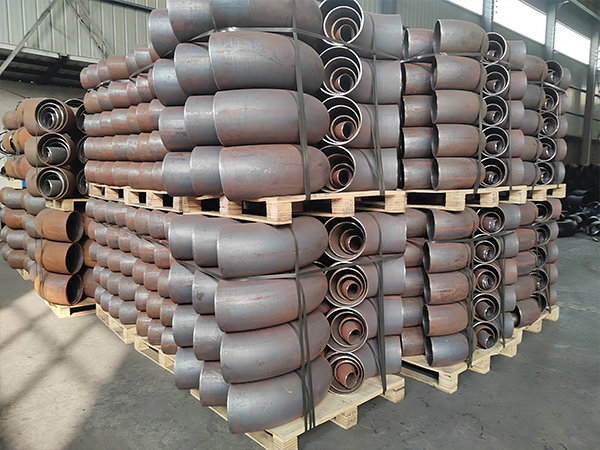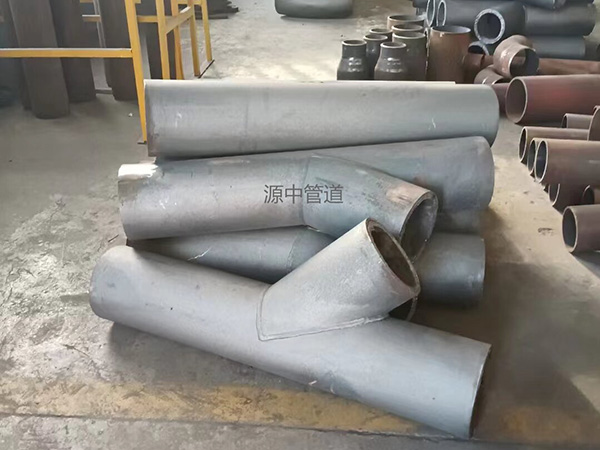NewsDetails
Safe Application of PTFE-Lined Pipes: A Practical Guide
author:Yuanzhong time:2025-09-16 21:21:11 Click:153
PTFE(Polytetrafluoroethylene),commonly known by the brand name Teflon®,is an exceptional material for lining pipes and components in aggressive chemical processes.Its safety advantages are paramount,but they are entirely dependent on correct application,installation,and maintenance.Using a PTFE-lined pipe incorrectly can lead to serious safety incidents.
The core safety principle is understanding that the PTFE liner is a non-structural,chemically inert barrier.The outer pipe(typically carbon steel or stainless steel)provides the mechanical strength.Safety revolves around protecting the integrity of this delicate liner.
1.Core Safety Advantages:Why PTFE is Chosen
Unmatched Chemical Resistance:PTFE is virtually inert to almost all industrial chemicals,including strong acids,caustics,halogens,and solvents.This prevents corrosion of the structural pipe,leaks,and the release of hazardous fluids,protecting personnel,equipment,and the environment.
High Purity and Non-Stick Surface:The ultra-smooth,non-stick surface prevents product contamination,buildup,and blockages.This is critical in industries like pharmaceuticals and food processing.It also allows for easier cleaning and reduces the risk of cross-contamination.
Wide Temperature Range:PTFE can typically operate continuously from cryogenic temperatures up to approximately 260°C(500°F).This makes it suitable for a vast range of processes without material degradation.
2.Critical Safety Considerations and Potential Hazards
Misapplication of PTFE-lined pipes is where the greatest risks lie.Key hazards and their mitigating factors include:
A.Mechanical Damage to the Liner:
The PTFE liner is soft and can be easily cut,torn,or deformed.
Hazard:Introduction of solid particles,improper tool use during installation,or abrasive slurries can damage the liner.A breach allows the corrosive fluid to contact and rapidly corrode the outer shell,leading to sudden failure.
Safety Practices:
Handling:Never drop or impact the pipes.Use protective end caps until the moment of installation.
Installation:Avoid dragging the liner against sharp edges.Use dedicated,non-metallic installation tools(e.g.,nylon mandrels)to pull flanges together.Never use a steel rod threaded through the pipe to force alignment.
Application:Avoid using lined pipes for highly abrasive slurries.If unavoidable,specify a thicker liner or consider a different material.
B.Thermal Expansion and Vacuum Conditions(The Most Common Failure Mode):
PTFE has a very high coefficient of thermal expansion—about ten times that of steel.
Hazard(Heat):During heat cycling,the PTFE liner expands much more than the steel shell.If it is not properly designed and installed with compression relief features(like bellows or expansion joints),it can buckle,collapse,or delaminate,blocking the flow or causing failure.
Hazard(Vacuum):Under internal vacuum,the atmospheric pressure on the outside can cause the unsupported liner to collapse inward(like sucking on a straw).This is a critical design flaw.
Safety Practices:
Design:The system must be designed for the full temperature cycle.Specify pipes with features that accommodate thermal stress.
Vacuum Rating:Never use a standard PTFE-lined pipe under vacuum unless it is explicitly rated for it by the manufacturer.Vacuum-rated pipes often have a special mechanical locking mechanism between the liner and the shell(e.g.,a wire ring or a profile that locks the flange liner into the steel housing).
C.Pressure and Temperature Limitations:
Every lined pipe has a specific pressure-temperature rating.
Hazard:Exceeding the rated pressure can cause the liner to extrude or the entire assembly to rupture.Exceeding the temperature limit(typically 260°C/500°F for PTFE)will cause the liner to soften and deform,leading to failure.
Safety Practices:
Know the Ratings:Always refer to the manufacturer's data sheets for the exact pressure-temperature curve.The safe operating pressure decreases as the temperature increases.
Protection Systems:Ensure pressure relief valves(PSVs)and temperature sensors are installed and functional to prevent the system from exceeding its safe operating window.
D.Flange Connection Integrity:
The flange area is a critical point of potential leakage.
Hazard:Over-tightening flange bolts can crush the PTFE liner face,damaging the seal.Under-tightening can lead to leaks.The gasket material must be compatible.
Safety Practices:
Torque Specifications:Always use a torque wrench and follow the manufacturer's recommended bolt tightening sequence and torque values.
Gasket Selection:Use compatible gaskets(often PTFE-enveloped or filled)and ensure they are in good condition.
3.Safe Installation and Operational Checklist
Inspection upon Receipt:Before installation,inspect the liner internally for any visible damage,scratches,or imperfections.
Proper Support:The pipeline must be adequately supported to prevent sagging,which puts stress on the liners,especially at flanges.
Pre-commissioning Checks:Before introducing chemicals,perform a leak test with water or air(at a safe pressure)to verify the integrity of all connections.
Training:Personnel handling and installing lined pipes must be trained in their specific requirements and fragility.
In conclusion,PTFE-lined pipes are a safe and reliable choice only when their physical limitations are respected.Safety is achieved through diligent design that accounts for thermal and vacuum stresses,careful handling to prevent mechanical damage,and strict adherence to operational limits.A failure in a PTFE-lined system is rarely a material failure of the PTFE itself;it is almost always a failure of the application of the system.
 Recommended Products
Recommended Products
 Contact us
Contact us
—— Contact:Manager
—— Tel:+86 19833790008
—— Email:772878082@qq.com
—— Url:http://www.yuanzhongpipeline.com
—— Address:Pucheng Development Zone, Yanshan County, Hebei Province















